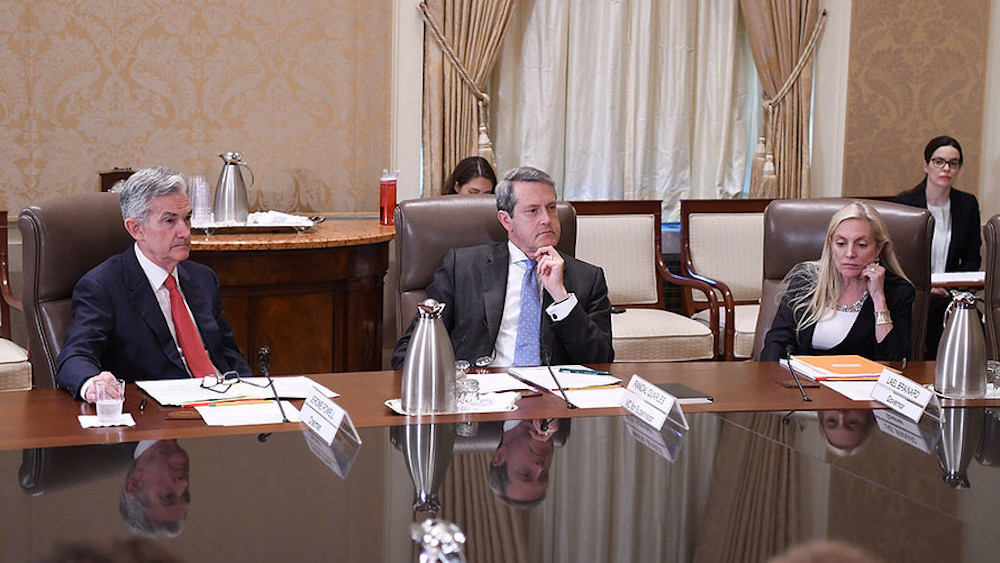
VASANTH KUMAR – APRIL 30TH, 2021
EDITOR: SEBASTIAN MARSHALL
The COVID-19 recession and subsequent policy response have made Jerome Powell an important authority figure. Financiers, economists, and business leaders alike scrutinize and dissect his texts to better predict future economic and financial expectations. A month ago, his innocuous mention of inflation caused investors to desert government bonds in fear of low real returns, illustrating the power of such statements. However, Powell, and the Fed chair position more generally, does not command dictatorial control over monetary policy. Rather, the Federal Open Market Committee (“FOMC”), made up of the seven Governors of the Federal Reserve Board and four rotating Presidents of the regional Federal Reserve Banks, set policy democratically. Consequently, understanding the Fed’s changes in attitude to monetary policy over the last year requires an understanding of the recent history of the FOMC.
In particular, 2015 presented a key inflection point that, today, is cited frequently in motivating changes to the FOMC’s strategy. Six years earlier, in response to the increasing unemployment rate from the fallout of the 2008 Financial Crisis, the Federal Reserve had reduced, and subsequently held, its target interest rate to 0-0.25%. Not unlike this year’s response to the COVID-19 recession, a flurry of lending facilities were created to extend credit to troubled financial institutions.
By December 2015, however, the Federal Reserve decided to increase its interest rate target. The chair at the time, Janet Yellen, defended the decision, stating:
Looking further ahead, I think that many of the fundamental factors underlying U.S. economic activity are solid and should lead to some pickup in the pace of economic growth in the coming years … In particular, I anticipate that employment will continue to expand and the unemployment rate will decline further.
Additionally, Yellen asserted that inflation was being artificially suppressed by low oil prices, and that she expected inflation to return to, or exceed, the Fed’s 2% target within the next three years.
Yellen is often cited as the key architect behind the 2015 interest rate increase. This assignment of significant responsibility (or culpability) to the Fed Chair, as is the case today with Powell, while ignoring the input of other FOMC members, can be attributed to two unique characteristics of the FOMC. The first is that, while the schedule of every FOMC meeting is released three weeks afterwards, the actual transcripts of the meetings, including concerns or criticisms that members may have about policy decisions, are only released five years later. Thus, the internal disputes over the December 2015 interest rate increase were only released in January 2021, revealing hitherto unrecorded statements from several FOMC members expressing concern and caution over what they thought to be a premature rate hike.
One of the more vocal members was Board Governor Lael Brainard, who, in the transcripts, stated,
The recent price data give little hint that this undershooting of our [inflation] target will end any time soon. Although there may be reasons to expect inflation to rise gradually over the medium term, the forces that have kept it below our target have been remarkably persistent. … The Phillips curve remains inert, a tiny fraction of its former self.
However, Brainard still ended up voting for the interest rate hike—in fact, the hike was unanimously approved by all voting members, despite any misgivings recently revealed by the transcripts. This decision illuminates the second peculiarity of FOMC policy: the “premium” assigned to consensus. Generally, this premium places value on the appearance of unity that emerges from a unanimous vote, which boosts confidence in the FOMC as a credible, steady, and apolitical institution. As former Board Governor Daniel Tarullo stated, in defending his yes vote:
The moment of liftoff after seven years would be a particularly bad time to enter a dissent and thereby risk the chair’s leadership position at a critical time in monetary policy.
However, ex post facto, Yellen’s heady forecast of inflation, the unemployment rate, and growth proved dangerously optimistic. While this is much clearer in the aftermath of the recovery, the contemporary data in 2015 on unemployment, and especially on inflation, made the interest rate hike seem misguided regardless. The CPI inflation rate, which had already plummeted from a pre-recession level of 3.84% in 2008, was barely registrable at 0.12% in 2015. Yellen’s predicted rise in the inflation rate never came, partially offset by stagnant cell phone prices. In December 2015, the unemployment rate was 5.0%, an exact 50% decrease from the height of 10.0% in June 2009 and still above the May 2007 trough of 4.4%.
In addition to conventional economic statistics, there were several peripheral examples of how the “real” economy was recovering even more slowly than expected. Chiefly among these was the labor force participation rate (“LFPR”), a statistic that, today, is frequently mentioned by Powell as justifying the Fed’s strong monetary response. In June 2009, the LFPR was 65.7%; by December 2015, it had plummeted to 62.7%. The falling LFPR, which was stagnating prior to the recession, indicated that the December 2015 unemployment rate was a significant overestimate of the labor market recovery. It implied that workers had stopped searching for work altogether, ossifying the large initial job losses in 2008-2009.
Beyond the LFPR, in 2015, the industrial production index (100.99) was well below the pre-recession level (108.86); the poverty rate (17.9%) was above the 2007 rate (17.0%); and the personal savings rate (7.3%) was not only above the pre-recession rate (3.5%), it was increasing, indicating that households were decreasing their consumption levels.
All signs pointed to a struggling recovery, but the FOMC made the bet that a united front behind their rate hike would be succeeded by stronger growth. In truth, a counterfactual with FOMC dissent does not exist, so the benefit of higher credibility cannot be quantified. However, the potential consequence of decreased credibility in the Federal Reserve is nebulous, and is a poor assessment of monetary policy when compared to the more tangible measures of unemployment, labor force participation, and output growth.
In the aftermath of the recovery, it became clear that the Federal Reserve’s original guiding policy required revision. In 2019, and again in August 2020 during the COVID-19 recession, the Federal Reserve added several revisions to its “Statement on Longer-Run Goals and Monetary Policy Strategy,” a platform of seven key points that guide the long-run considerations of Federal Reserve policy. Two of these revisions indicated a general shift in attitudes on the role of economic policy.
The first of these was the implementation of flexible average inflation targeting (AIT). This removed the Federal Reserve’s upper bound on its 2% inflation target, instead targeting a higher overall “average” inflation rate over time, which would allow its policy to remain accommodative even during mature recoveries. Second, the Federal Reserve adjusted its response trigger from “deviations” in unemployment to “shortfalls” in unemployment; this would apply less pressure for the Federal Reserve to implement contractionary policy in the event of a tight labor market. Finally, perhaps symbolically, the Statement no longer opens its second point by stating “inflation, employment, and long-term interest rates fluctuate over time in response to economic and financial disturbances.” Instead, employment is emphatically given precedence:
Employment, inflation, employment, and long-term interest rates fluctuate over time in response to economic and financial disturbances.
This shift in monetary policy perspective appears sudden, but its roots are clear after considering the members of today’s FOMC: not only are four members veterans of the 2015 FOMC, but Powell, himself, was one of the members who expressed internal dissent at the rate hike, citing low labor force participation and the low inflation rate. As Fed chair today, Powell has considered such measures and more, including the LFPR for low-wage workers, Black workers, and workers without a college degree. In justifying loose monetary policy, Powell presents a stark difference from Yellen’s prioritization of the unemployment and inflation rates just five years ago. However, it would be a mistake to assign sole responsibility for this shift to Powell, as it glosses over the concealed, but ultimately successful, push from other FOMC members such as Brainard towards looser policy. This push ensured that while the Federal Reserve would continue to put up a united front to maintain credibility, this front would espouse a newer framework that was better suited to the post-Great Financial Crisis economy.
Featured Image Source: MarketWatch
Disclaimer: The views published in this journal are those of the individual authors or speakers and do not necessarily reflect the position or policy of Berkeley Economic Review staff, the Undergraduate Economics Association, the UC Berkeley Economics Department and faculty, or the University of California, Berkeley in general.


